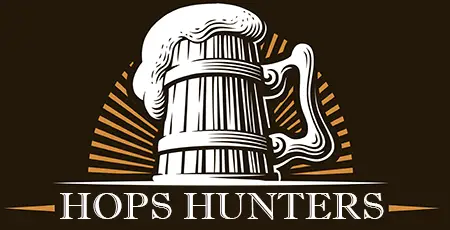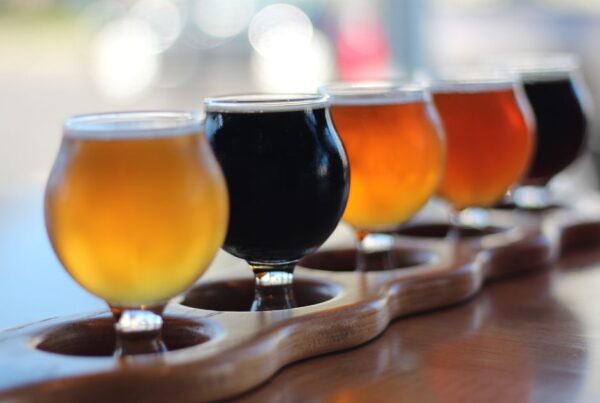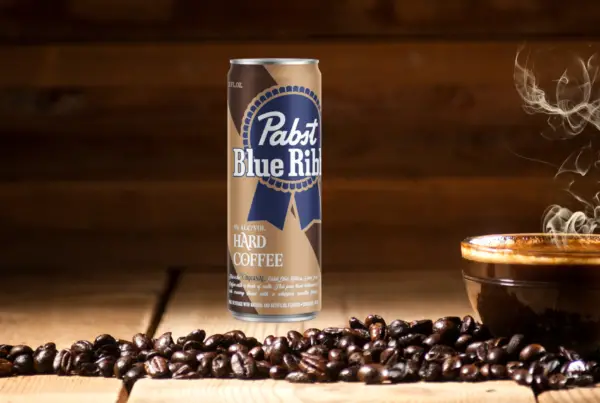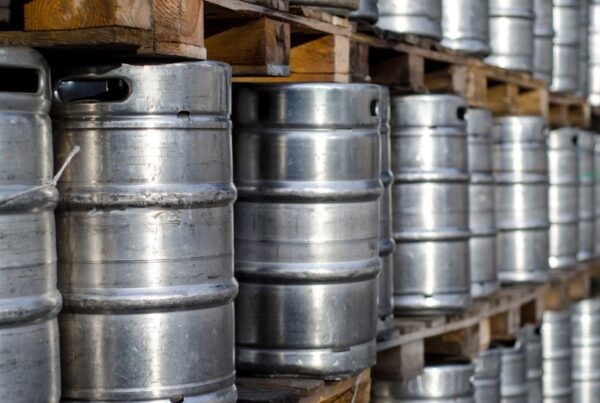9 American Beers to Drink This Memorial Day Weekend [2023]
Memorial Day weekend isn’t just about a day off work, the unofficial start of summer, or the scent of burgers sizzling on the grill—it’s a day for solemn remembrance and saluting those who served. But in addition to that, it also happens to be one of America’s top beer-drinking holidays.
Of course, if you’ve ever cracked open an ice-cold Budweiser or sipped on a Sam Adams at a backyard barbecue, you’re no stranger to American-style beers. But “The King of Beers” is really just a drop in the keg when it comes to the huge number of breweries big and small that have terraformed America’s beer brewing landscape over the years.
Let’s take a quick look at 9 beers that are as American as… well, a frosty beer on a hot summer day. Here’s to life, liberty, and the pursuit of hoppiness:
1. Budweiser
Type: American Lager
Inaugural Brewing: 1876
Why It’s Important: How could we not start this list with Budweiser? There’s a reason it says “The King of Beers” on the label instead of just “A Beer.” And it’s because Bud didn’t just enter the American beer market; he swaggered in and set up a throne.
Introduced by Anheuser-Busch, Budweiser basically became the blueprint for American-style lagers—a recipe that sparked countless imitations but has never quite been duplicated. Bud and Bud Lite are like the Elvis of American beers—a household name and an original that inspired a generation.
Interesting Fact: The name was inspired by Budweis, a town in the Czech Republic known for its brewing history.
2. Yuengling Lager
Type: American Lager
Inaugural Brewing: 1829
Why It’s Important: This beer isn’t just old; it’s “founded in 1829” old—making it the elder statesman of American brewing. The name Yuengling is of German origin, and comes from its founder David Jüngling, who anglicized his surname to one with less umlauts after immigrating to the U.S. from Germany.
Yuengling’s endured it all: a civil war, The Great Depression, 2 world wars, Prohibition, even the rise of lite beer. And yet, it’s stood its ground, unwavering, like the Rocky Balboa of beers. Yuengling is more than a beer; it’s a symbol of America’s resilience.
Interesting Fact: During the prohibition era, Yuengling managed to survive by producing “near beer”—beverages that complied with the law because they contained less than ~0.5% ABV—and opening a dairy. That’s right, they survived by selling ice cream and other dairy products. Now that’s the kind of American ingenuity and resourcefulness that says “You can take our beer… but you’ll never take our freedom to make other stuff while we wait for you to come to your senses!”
3. Pabst Blue Ribbon (PBR)
Type: American Lager
Inaugural Brewing: 1844
Why It’s Important: Now here’s a beer that’s as American as apple pie and pick-up trucks. Meet PBR, the blue-collar hero of the American beer landscape. Since 1844, this lager has been a trusted friend to working folks, winning hearts with its no-nonsense flavor (and no-nonsense price). Like Budweiser, PBR is woven into the fabric of America, a constant companion through thick and thin, symbolizing the hard-working spirit of the nation.
Interesting Fact: PBR got its “Blue Ribbon” moniker after winning at the 1893 World’s Columbian Exposition in Chicago—allegedly. Some historians dispute this claim, saying that while Pabst did indeed win a medal at the exposition, it may not have been for the “best beer.” Either way, it’s a great origin story.
4. Coors Banquet
Type: American Lager
Inaugural Brewing: 1873
Why It’s Important: If Budweiser is the Elvis of beers, then Coors Banquet is the Johnny Cash. This beer didn’t just represent the American West—it was the West. Wild, rugged, and unpretentious. Coors Banquet set the stage for a new era of American “regional beers.” This beer didn’t just follow the road less traveled—it blazed its own trail.
Interesting Fact: Coors wasn’t available east of the Mississippi River until the 1980s due to the company’s insistence on cold, refrigerated transportation. Its formerly limited distribution was famously portrayed in the plot of Hal Needham’s Smokey and the Bandit (1977), where Burt Reynolds is tasked with illegally transporting a truckload of (presumably very warm) Coors from Texas to Georgia.
5. Anchor Steam
Type: Steam Beer (AKA California Common)
Inaugural Brewing: 1971
Why It’s Important: In the early 70s, Anchor Steam was the David among the Goliaths, the craft brew that dared to be different in an ocean of American-style lagers. Its success wasn’t a victory—it was a revolution, in that it sparked a craft beer resurgence that’s been reshaping the American beer scene ever since.
Interesting Fact: The term “Steam Beer” comes from the 19th-century practice of fermenting beer on San Francisco’s rooftops in cool weather, which produced a cloud of steam when the warm wort met the cool air.
6. Goose Island Bourbon County Brand Stout
Type: Imperial Stout
Inaugural Brewing: 1992
Why It’s Important: Goose Island’s Bourbon County Brand Stout was a pioneer in bourbon barrel-aging, a process that brings some added complexity into the taste of beer. Released back in ’92, this hefty stout was a game-changer. It wasn’t just about the beer anymore, it was about the journey the beer had been on. Aging in bourbon barrels opened up a new frontier in beer-making, inspiring countless breweries to start their own barrel-aging programs.
Interesting Fact: The first batch of Bourbon County Brand Stout was aged in barrels that came from Jim Beam.
7. Sierra Nevada Pale Ale
Type: American Pale Ale
Inaugural Brewing: 1980
Why It’s Important: Sierra Nevada Pale Ale was a game-changer in the American beer scene. Launched in 1980, this beer popularized the American Pale Ale style and paved the way for hop-forward craft beers. Its success encouraged other craft breweries to experiment with robust, different flavors. Sierra Nevada showcased that beers could be much more than just refreshing; they could be complex just like coffee or wine.
Interesting Fact: Sierra Nevada Brewing Co. is powered by a ton of solar panels, making it one of the world’s most sustainable breweries.
8. Samuel Adams Boston Lager
Type: German-Style Lager (Vienna Lager)
Inaugural Brewing: 1984
Why It’s Important: Samuel Adams Boston Lager played a pivotal role in the American craft beer revolution. Released in 1984, this lager introduced more of the American public to more flavorful German-style beers, breaking some of the monotony of mass-produced American lagers.
Like Anchor Steam, its success was proof that there was a market for craft beers, encouraging other brewers to take the plunge. (And just look at the name! It screams American history louder than a Black Cat firecracker.)
Interesting Fact: While the founding father didn’t start the brewery (he was a little too old in 1984), Samuel Adams did brew his own beer.
9. Stone Brewing Arrogant Bastard Ale
Type: Classified (According to their site—In reality it’s an American Strong Ale)
Inaugural Brewing: 1997
Why It’s Important: By the name alone, you can probably guess that this beer took audacity to a whole new level.Stone Arrogant Bastard Ale smirked at convention, flipped the bird at conformity, and changed the game in ’97. It was not a brew for the faint of heart—it was an unapologetically bold ale with an aggressive hop profile and a relatively high ABV of 7.2%. (There’s also a Double Bastard Ale with 11% ABV).
With marketing language like: “This is an aggressive beer. You probably won’t like it. It’s quite doubtful that you have the taste or sophistication to be able to appreciate an ale of this quality and depth.” this was a beer that yelled, “America, you’re not worthy,” but guess what? America stepped up.
Interesting Fact: Unlike most beers (especially at the time it was first released) Stone Brewing’s “Arrogant Bastard” branding started out as a joke.

![9 American Beers to Drink This Memorial Day Weekend [2023]](https://hopshunters.com/wp-content/uploads/2023/05/memoria-day-american-beer-options.jpg)




